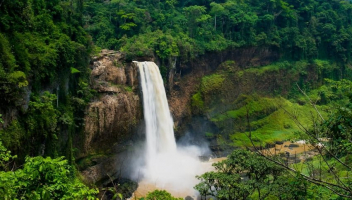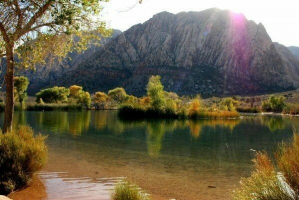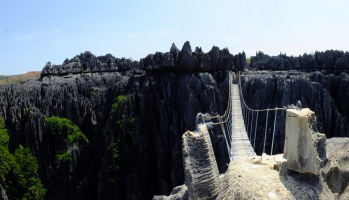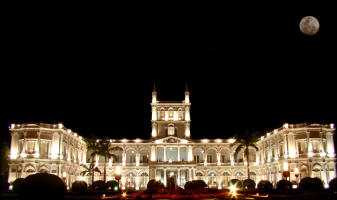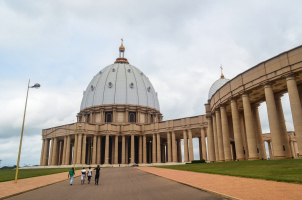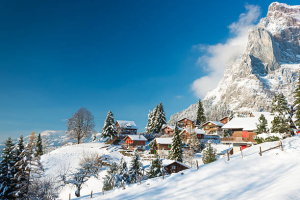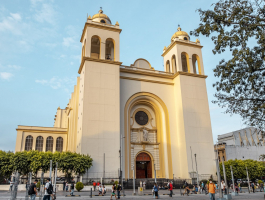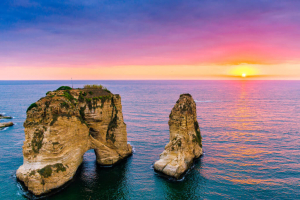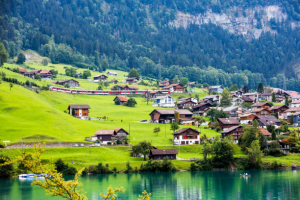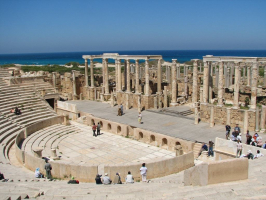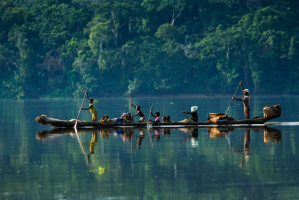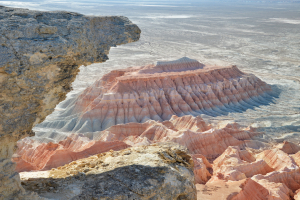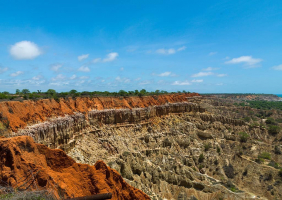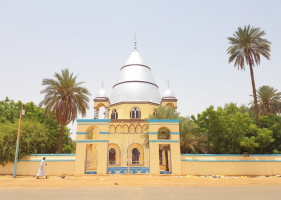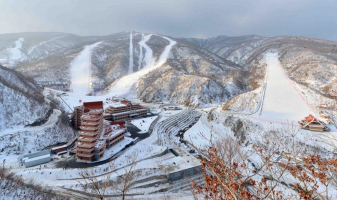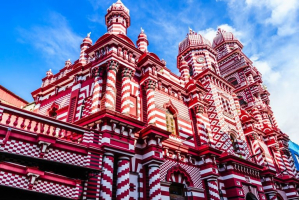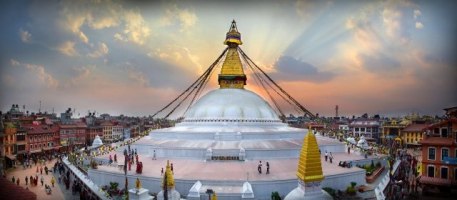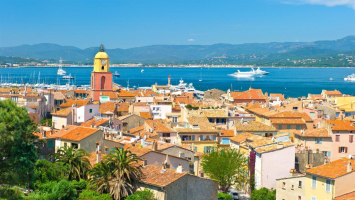Top 11 Best Places to Visit In Bratislava
The entire city of Bratislava, which is situated along the Danube, is encircled by vineyards. This city, which was established in the 18th century, is very ... read more...well suited for habitation. The roads are perfect for cycling and walking because they are so neat and orderly. In addition to this, the city is full of pubs and cafés. Also, the Danube River is a highly beautiful location that has long drawn tourists from all over the world. The entire city is extremely calm and devoid of any sort of commotion. This article is about some of the best places to visit in Bratislava.
-
Both inside and out, the Old Town Hall is a gorgeous structure. Old Town Hall has witnessed numerous historical occurrences throughout its long history. In the Old Town of Bratislava, Slovakia's capital, you can find Old Town Hall, a collection of 14th-century structures. As one of the oldest stone structures still surviving in Bratislava, the city hall is also the oldest in the entire nation. The tower was constructed around 1370. By joining three townhouses, Bratislava Old Town was first built in the fifteenth century, and over the centuries, it underwent numerous restorations. This is one of the Best Places to Visit In Bratislava.
The majority of the space is taken up indoors by the Museum of City History. This 1868-founded museum has displays on the history of the city and torture equipment. Torture devices, the old town dungeons, antique weaponry and armor, paintings, and miniatures are among the exhibits. Don't forget to visit the basement to witness exhibits of medieval torture devices before climbing the tower for a stunning perspective of the central square in Bratislava Old Town. You will find the Hungarian Palaces and Estates if you visit this town. Several churches have been adequately maintained up to this point. There are numerous significant monuments across the city that have genuinely maintained their splendor.
Location: Bratislava
Phone: +421 2/544 194 10
Opening hours: 9 am - 4 pm
Rating: 4.5/5.0, 9065 Tripadvisor reviews
Website: https://muzeumbratislava.sk/en/old-town-hall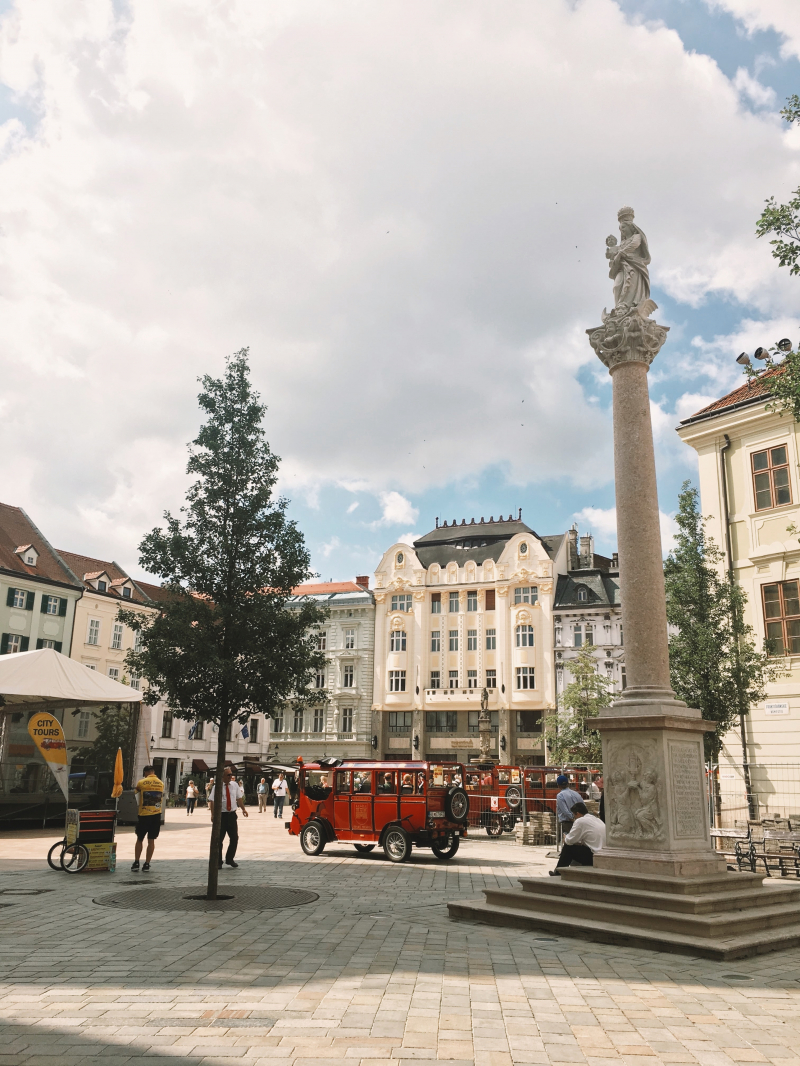
Image by Beyza Uçak via pexels.com Video by Cam Arcilla via youtube.com -
The Church of St. Elizabeth of Hungary, usually referred to as the Blue Church, is a lovely, almost romantic medieval structure located in Bratislava's Old Town neighborhood. The lovely sacral structure was created by Hungarian architect dön Lechner and features aspects of Art Nouveau. It stands out for the vibrant blue façade that was carefully crafted with frequent use of mosaic. It is a well-liked location for weddings and christenings.
The Church of St. Elizabeth is a single-nave structure with an additional cylindrical tower. Pale blue paint is used to decorate the church's interior, exterior, and even roof. Blue majolica is used to embellish the church's exterior and interior walls. The primary focal point of the church's façade and the main altar is a mosaic with a depiction of St. Elizabeth holding a rose.
Initially, it was intended for the cathedral to serve as a sort of Sissi, or Empress Elizabeth, memorial tomb. The Blue Church now serves as a parish church for Roman Catholics and has regular services. It's fascinating to note that in the Brussels park's Mini-Europe, this masterpiece of Art Nouveau symbolizes Slovakia. This is one of the Best Places to Visit In Bratislava.Address: Bezrucova 2, Bratislava 811 09 Slovakia
Phone: +421 2/527 335 72
Opening hours: 7 am - 7:30 am, 5:30 pm - 7 pm
Rating: 4.5/5.0, 3143 Tripadvisor reviews
Website: https://modrykostol.fara.sk/
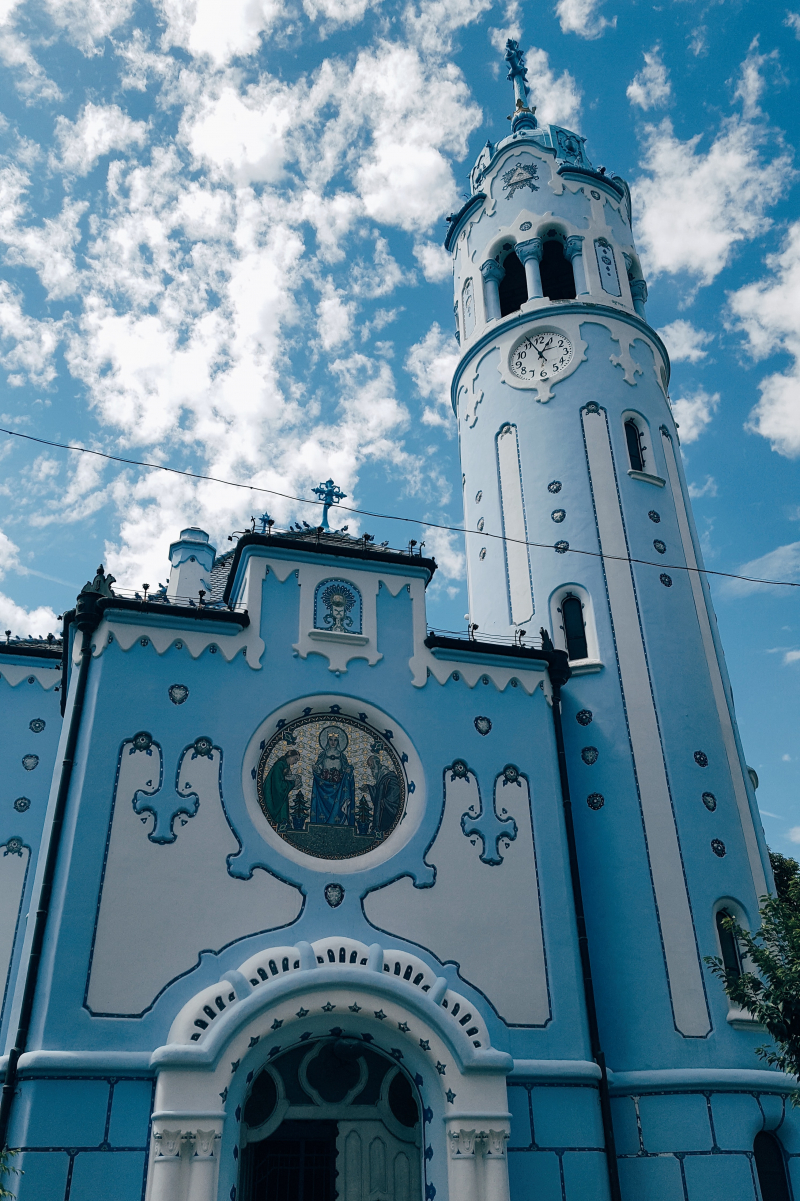
Image by Reiseuhu.de via unsplash.com Video by Jake Yorkman via youtube.com -
Devin Castle, a few miles west of Bratislava, is one of Central Europe's most significant archeological monuments. An exceptionally striking feature is Devín Castle, which is perched atop a sizable rock hill above the meeting point of the Danube and Morava. It is a part of Slovakia's earliest recorded history. On top of an older Great Moravian rampart, the 15th century saw the construction of the southern gate, which is guarded by two semicircular bastions. A priceless historical artifact from the Roman era of Devin's history is located just behind the gate and on the right side of the route. The foundation of a large stone structure dating to the fourth century looks like a Classical tomb.
The path divides into two on the ridge of Devin Castle hill. The location of the Great Moravian church from the ninth century is reached by taking the left branch. The middle and upper portions of the medieval castle are preserved as ruins and can be reached by taking the path's first fork. The two-story Gothic Garay palace was constructed in the first part of the 15th century, and the Renaissance palace and defenses were completed in the next century. The Bratislava City Museum currently hosts exhibitions in some of the palace's domed chambers. In the courtyard of the middle castle sits the 55-meter-deep castle well. A terrace with views of the Austrian mountain Braunsberg, the River, and the abandoned amphitheater is located close to the well.
The castle is an magnificent tower with battlements stands out in the stunning surroundings above the Morava and Danube rivers' bicolor confluence. The tower is the Virgin one. The top platform has the remains of a guard tower from the 13th century that was renovated in the 15th century and offers a panoramic view of the environs. It is reached by a bridge over a moat and stairs. During the tourist season, historical fencing performances are scheduled. Visitors can also practice throwing a javelin, an axe, or a bow. A little harbor located below the Devin Castle is where boats depart for Bratislava or Hainburg in Austria.
Address: Muránska 10, Bratislava 841 10 Slovakia
Phone: +421 2/657 301 05
Opening hours: 10 am - 6:30 pm
Rating: 4.5/5.0, 2866 Tripadvisor reviews
Website: https://muzeumbratislava.sk/en/devin-castle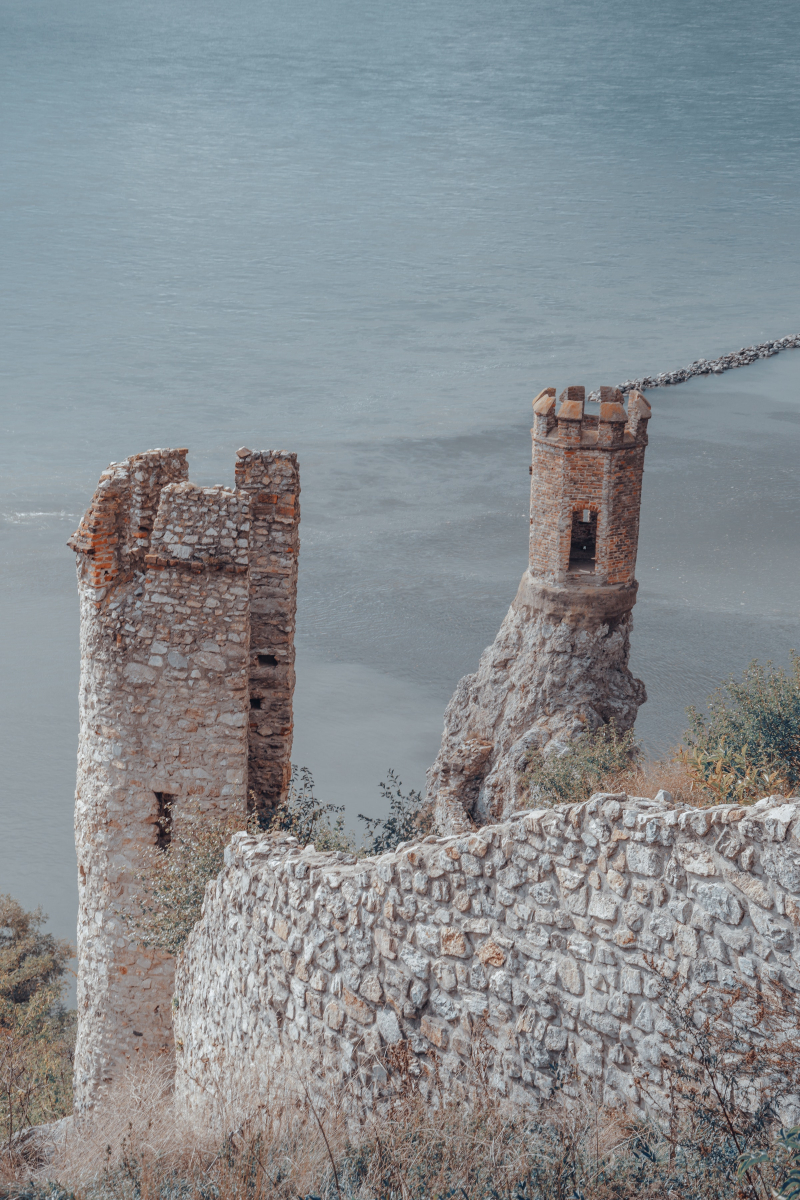
Image by Petar Avramoski via pexels.com 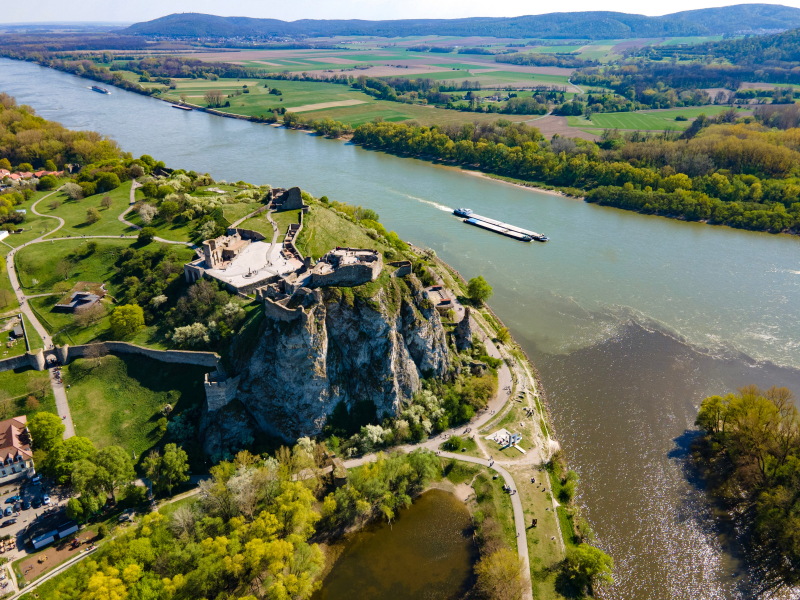
Image by Florian Haider via pexels.com -
Slavin honors the Soviet Army personnel who died defending the city against the German occupiers. The largest war memorial in Central Europe is 52 meters tall and is one of the most prominent landmarks on the city's skyline. On a hill not far from the Bratislava Castle is Slavin. The monument, which was built in 1960, is popular because of the vistas, but it's also a fascinating specimen of Communist architecture. Slavin was designated a national cultural monument in 1962.
Slavin, which has 278 individual burials and 6 collective graves, is accessible by a staircase. The ceremony hall, which dominates the monument, forms the center. A lovely colonnade surrounds it. The ceremony hall's entrance cassette door is embellished with a bronze relief composition by R. Pribi from the outside, honoring the Second World War battles. The ceremony hall's walls are made of marble.
The 39.5 m-tall colossal granite pylon that was built over the ceremony hall is impressive. On top of it is an 11-meter-tall victory sculpture created by A. Trizuliak. A park with trees and shrubs that were planted and transported from various regions of the former Soviet Union surrounds the memorial. The eastern terrace offers a stunning view of the city.Address: Havlickova 6 81104 Bratislava
Phone: unknown
Opening hours: unknown
Rating: 4.5/5.0, 1246 Tripadvisor reviews
Website: https://slovakia.travel/en/slavin-bratislava
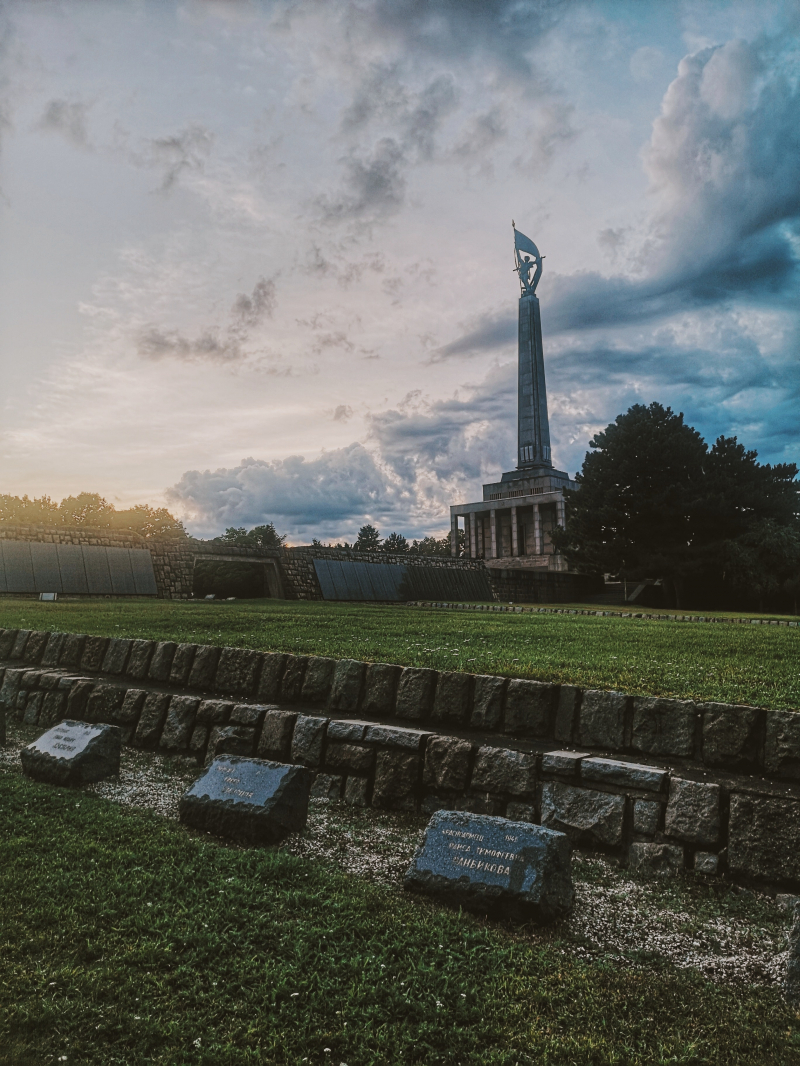
Image by Dominika Gregušová via pexels.com 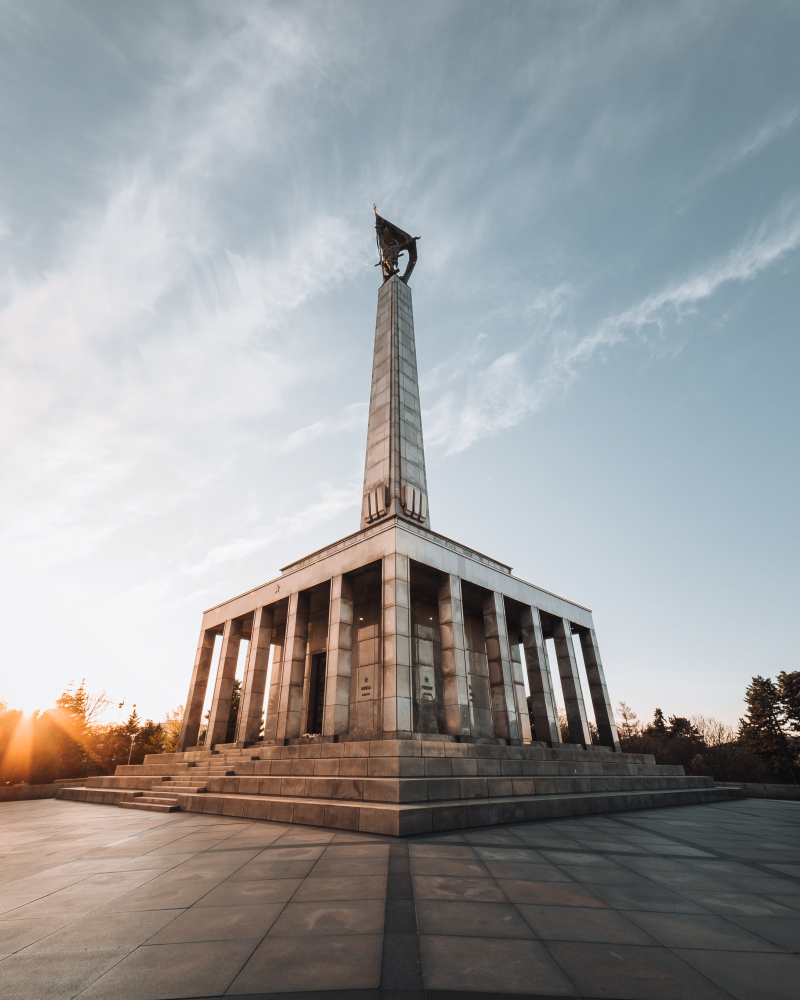
Image by Martin Katler via unsplash.com -
The river that surrounds the museum and its sponsor, the Dutch art patron and collector Gerard H. Meulensteen, are both honored in the name of the Danubiana Meulensteen Art Museum. The museum is located inside a striking structure designed to resemble a Roman galley moored in a river's shallows. From May through October, when you may take a riverboat trip from Bratislava's city center, is the ideal time to see the Danubiana Meulensteen.
Fans of modern art will appreciate the opportunity to view the best pieces created by recent and present Slovak artists. The Danubiana Meulensteen Art Museum also presents a ton of seasonal, unique, creative, and stylish exhibits. A modern art museum is located on the ground level, and an 8,000 square meter park with a variety of sculptures is located in the grounds. It hosts presentations by renowned worldwide artists that alternate in the great hall on the first floor.
You can take a car, the bus, or a bike from BikeBratislava to get to the museum. From the stop beside the Nové SND building, which is the new home of the Slovak National Theater, you can take bus number 90 directly to Danubiana Meulensteen Art Museum.Address: Čunovo 851 10 Bratislava
Phone: +421 2/625 285 01
Opening hours: 10 am - 6 pm
Rating: 4.5/5.0, 419 Tripadvisor reviews
Webisite: https://danubiana.sk/
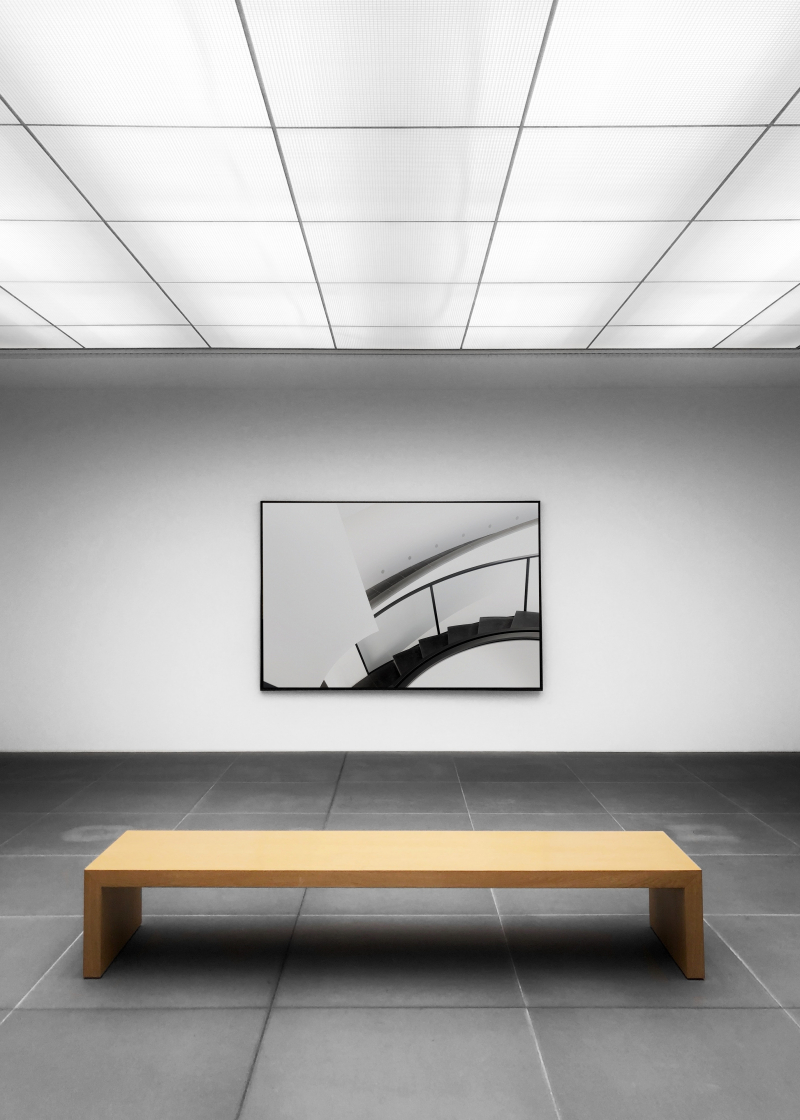
Image by Robin Schreiner via pexels.com Video by Danubiana Meulensteen Art Museum via youtube.com -
Bratislava Transport Museum is a result of the work of individuals who have been collecting historical items that show the evolution of road and rail transportation since the 1970s. A collection of bikes and cars, dating from the period between the two world wars up to automobiles from the 1970s, show the evolution of road transportation.
The collection of vehicles in the permanent road transportation display ranges from the earliest forms of transportation with and without motors, through bicycles, private cars, and lorries from the time between the two world wars, up to the automobiles from the 1960s and 1970s. Particularly intriguing aspects of the exhibit are military and governmental vehicles as well as prototypes that Slovak auto factories built after World War II.
Many steam, engine, and electrical locomotives, freight locomotives, and special railroad vehicles can be observed on the railway tracks at Slovak railways. Railway signal, safety, and communication equipment, tools for railroad maintenance, uniforms, and other items are shown in one of the museum's exhibition halls to provide visitors a glimpse into the country's railroad history.Bratislava Transport Museum is situated next to the nearby storehouses and the first steam-engine railway station in Bratislava from the 19th century. It can be reached either by a curved route from the intersection of Ancova and Praská Streets or by a pedestrian overpass over Ancova Street. The museum is a section of the Koice, Slovakia, Technological Museum.\
Address: Sancova 1/A 811 05 Bratislava
Phone: +421 2/524 441 63
Opening hours: 10 am - 5 pm
Rating: 4.5/5.0, 164 Tripadvisor reviews
Website: https://www.stm-ke.sk/
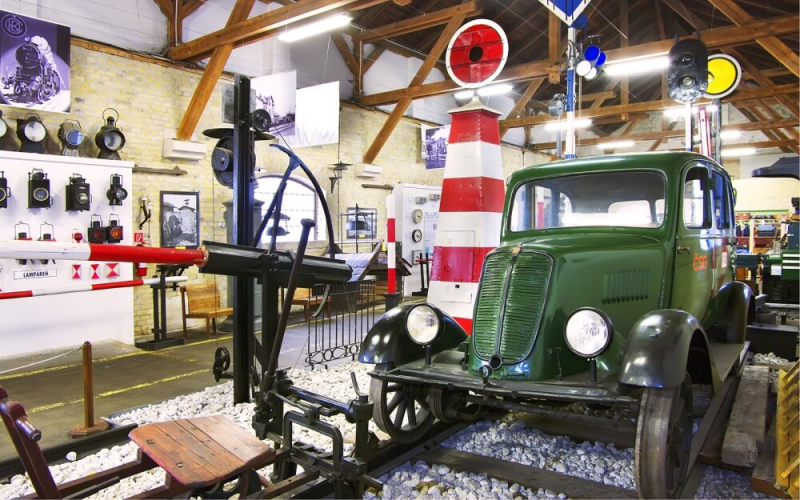
Image from website Bratislava Transport Museum 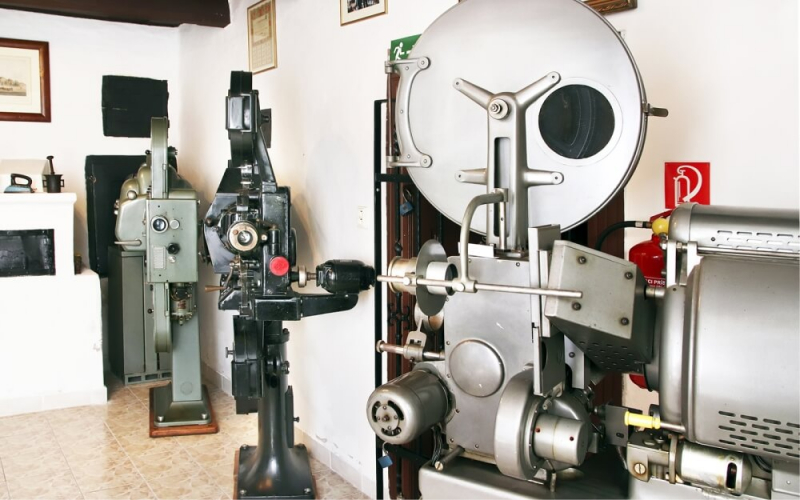
Image from website Bratislava Transport Museum -
The landmark overlooking the City, Bratislava Castle, dates back to the ninth century. It stands tall on the hilltop above the Danube River as a time-honored representation of the city. In the past, eight queens and eleven kings have been crowned in Bratislava. It makes sense that the castle is a favorite stop on tours of the city. The castle is located at a significant ancient route intersection. The village on the hill has been inhabited since the Stone and Bronze Ages. During the time of the Great Moravian Empire, the location had strategic geographic importance. It is considered as one of the Best Places to Visit In Bratislava.
The four wings of Bratislava Castle, each with a corner tower, form the shape of the castle. The Hungarian coronation jewels were kept in the south-west tower, often known as the jewel tower, for two centuries. Yard of Honor is the name of the space in front of the castle. Two triumphal gates and the imperial guard's guardhouses surround it. Reconstructed fragments of the Great-Moravian basilica and other structures from this time period can be found on the eastern terrace of the palace (11th century).
Don't miss to take in the breathtaking panoramic views of Bratislava from the region of Bratislava Castle. The castle is also wonderfully lit at night. You can take in the vistas, stroll through the Baroque gardens, sip coffee at one of Bratislava's most picturesque cafés, or visit the Museum of History in the castle if you hike for about 15 minutes.Address: Zamocka Ulica, Bratislava 811 06 Slovakia
Phone: +421 2/544 114 44
Opening hours: 10:00 AM - 5:00 PM
Rating: 4.0/5.0, 5597 Tripadvisor reviews
Website: https://www.snm.sk/en/museums/bratislava-castle/bratislava-castle/about-the-museum
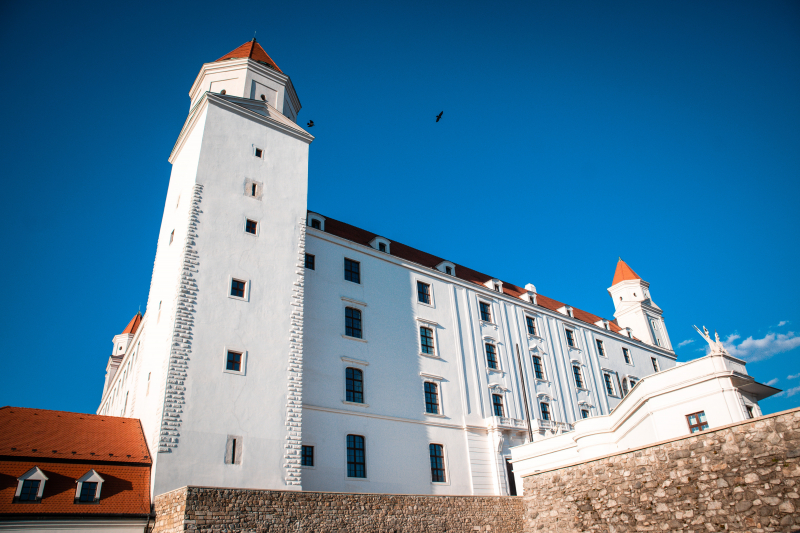
Image by Pham Ngoc Anh via pexels.com 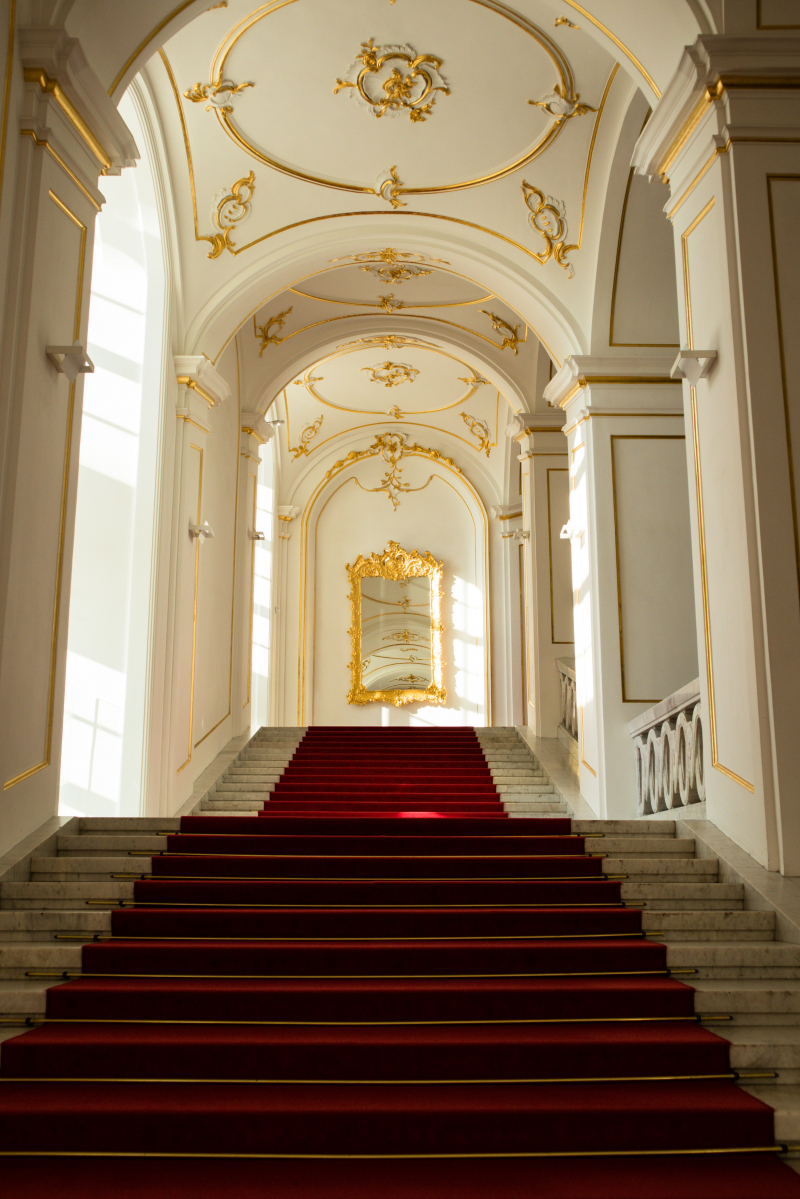
Image by Pham Ngoc Anh via pexels.com -
The largest, nicest, and one of the oldest cathedrals in Bratislava is St Martin's Cathedral, where Queen Maria Theresa was crowned. Queen Maria Theresa was one of the 19 people who were crowned at the event. A gold-plated copy of the coronation crown that is 85 meters high, 150 kg heavy, and attached to the top of the cathedral tower serves as a reminder of this illustrious era. In Bratislava, it is the second most well-liked tourist destination. The Old Town skyline is dominated by its 85 m high spire.
St Martin's Cathedral is shaped like a classic crucifix. To mimic the appearance of the church's original Gothic windows, the windows beneath the tower were altered. Here, you can see some stunning, enormous altars. If you enjoy classical music, you might find it intriguing that Beethoven's Missa solemnis was performed in this church for the first time. Make sure that you don't miss the tiny gate leading to the catacomb-filled Crypt. You must down this stairway to reach there, which at first glance appears a little frightening, but it is worth it because you will enjoy what you find below. Only two of the many crypts found underground are accessible to visitors. These are the remains of members of hereditary families, cardinals, and archbishops.St Martins' surroundings, like the Castle, are just as noteworthy as the building itself. A operating seminary with robed adepts on a cobblestone sidestreet and the picturesque remnants of outbuildings in a large staired courtyard are examples of this in the case of the cathedral. A monument to the synagogue, which stood next to the cathedral for centuries before the communist regime destroyed it circa 1970 to create place for the new bridge, is a little but significant neighbor of St Martin's Cathedral.
Address: Rudnayovo namestie 4549/1 81101 Bratislava
Phone: +421/02/ 544 334 30
Opening hours: 09.00 am - 06.00 pm
Rating: 4.0/5.0, 1038 Tripadvisor reviews
Website: https://dom.fara.sk/en/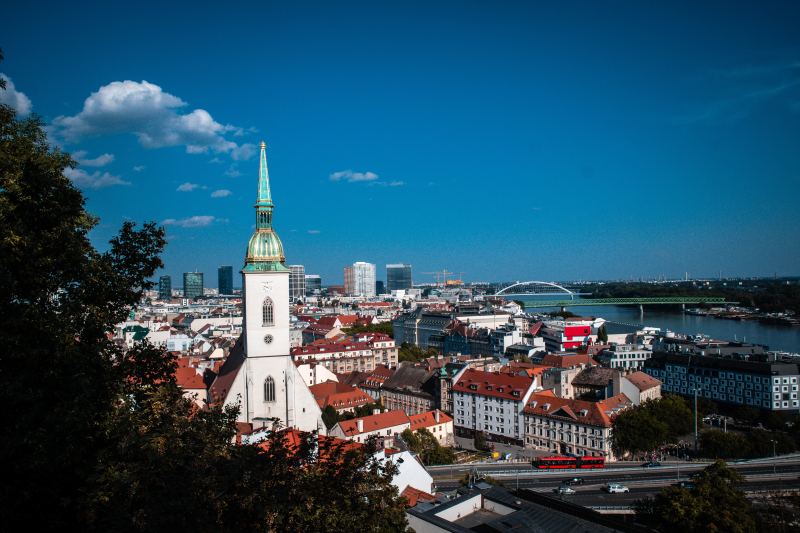
Image by Pham Ngoc Anh via pexels.com Video by Travel Experiences via youtube.com -
Slovakia's president resides in the Grassalkovich Palace, a palace in Bratislava. On Hodovo námestie, next to the Summer Archbishop's Palace, is where it is located. With a French garden, the structure is a Rococo-late Baroque summer palace. For Count Anton Grassalkovich, who served as the head of the Hungarian Royal Chamber and an adviser to Empress Maria Theresa, the Grassalkovich Palace was constructed in 1760. Aristocratic society events frequently took place at the opulent home. The palace serves as the president of the Slovak Republic's present official home.
A lovely park with mature trees and grass can be seen behind the Grassalkovich Palace on Hodovo Square. The park was formerly the palace's gardens. It still provides a tranquil setting away from the hustle and bustle of the city despite being initially designed as a French formal garden. It has an equestrian statue of Empress Maria Theresa, the Fountain of Youth by renowned Slovak sculptor Tibor Bártfay, and experimental statues created by modern artists. It's a secure area to let youngsters run around as dogs and bicycles are prohibited there (there is also a small playground). Accessible from Stefanikova or Banskobrystrická Streets; open daily from dusk till dawn.
Address: Bratislava-Old Town Hodzovo Namestie, Bratislava 811 06 Slovakia
Phone: +421 2/578 881 02
Opening hours: 8 am - 3 pm
Rating: 4.0/5.0, 486 Tripadvisor reviews
Website: https://www.prezident.sk/en/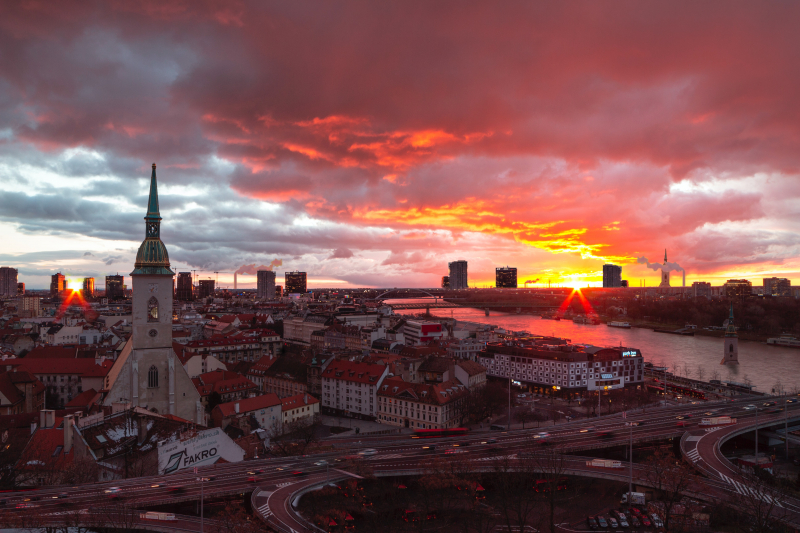
Image by Lukáš Kulla via unsplash.com (Photo is used for illustration only) Video by Travel Know Hau via youtube.com -
One of Slovakia's most exquisite examples of a classicist structure is the Primate's Palace. In the image gallery, portraits of Hungarian kings and queens are on display. Six tapestries that were discovered during the palace's repair make up an impressive portion of the exhibit. Together with five salons decorated with antique furniture and named for the colors of the walls (green, brown, blue, red, and gold), the Hall of Mirrors is another representative structure. Allegorical figures by J. Kögler and F. Prokop as well as vases by J. A. Messerschmidt may be found on the roof. The coat of arms of Cardinal Jozef Batthyányi, the original owner of the palace, is displayed atop the tympanum, and an iron replica of his hat, weighing 150 kg, crowns the structure.
A unique collection of 17th-century English tapestries is also housed at the Primate's Palace. These were created in the royal tapestry works in Mortlake, England, but weren't seen again until a reconstruction in 1903. They are unquestionably worth a visit. The magnificent St. George fountain, which shows the fabled knight defeating the dragon, is located in the Primate's Palace's square inner courtyard.
You are permitted to snap pictures in just one chamber, the Hall of Mirrors. Famously, the Peace Treaty of Pressburg between Austria and France was signed in this room in 1805. Enjoy the white high ceilings, red carpets, oak floors, enormous chandeliers, golden accents on the walls and furnishings, as well as the large golden mirrors with lighting in each room. Don't miss the view of the Chapel of Saint. Ladislaus (from above) near the end of the exhibit area; it is worth viewing. Of course, you must view the famous English tapestries when you visit this location. They were produced in Great Britain in the 17th century and were unintentionally discovered during a reconstruction in the Hall of Mirrors.
Address: Primacialne namestie 1, Bratislava 811 01 Slovakia
Phone: +421 2/593 563 94
Opening hours: 10 am - 5 pm
Rating: 4.0/5.0, 387 Tripadvisor reviews
Website: https://www.visitbratislava.com/sk/miesta/primacialny-palac/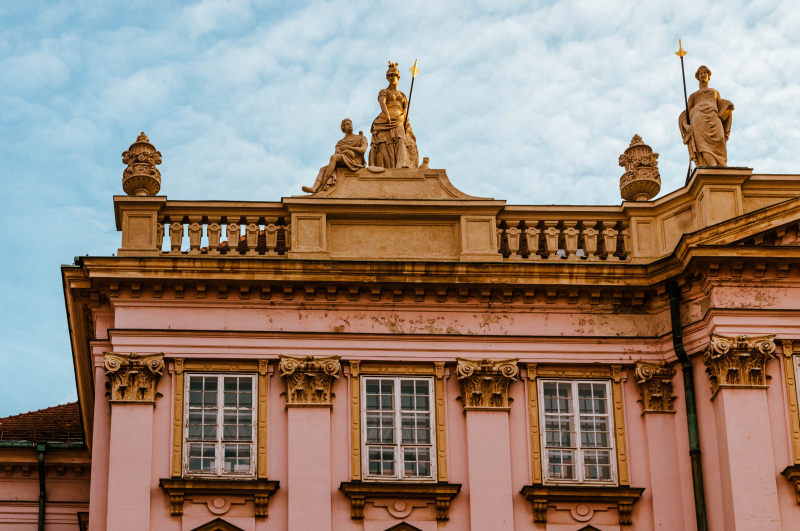
Image by Simófi István via pexels.com Video by Nomad Quest via youtube.com -
In addition to collecting and preserving art, the 1948-founded Slovak National Gallery (SNG) also find the ways to make it accessible to the public, teach people about it, and inspire them. The collection of the Slovak National Gallery contains works of Slovak art that date back hundreds of years. The Slovak National Gallery has buildings in five different Slovak cities to display the finest creations of artists active in Slovakia from the Middle Ages to the Present because the collection is too enormous to be displayed in a single place.
The Water Barracks, the building's original name, was a four-wing baroque house constructed in 1759–1763 on the Danube embankment (designed by architects G.B. Martinelli and F.A. Hillebrandt). Later, to accommodate increasing demands, it was rebuilt, and an addition was created (1969–1977; designed by architect V. Dedecek).
The Slovak National Gallery also oversees galleries in Ruomberok, Pezinok, the Strázky mansion in Spisská Belá, the Zvolen Castle, and other locations outside of Bratislava. One of the most important purchases of the Baroque art collections is the mourning portrait by K. Horvath-Stansith. Although the SNG premises in Bratislava have just undergone major reconstruction, the gallery is not yet completely open to the public. Nonetheless, you may get information about current exhibitions and programs on their website.Address: Namestie Ludovita Stura 33/4 81102 Bratislava
Phone: +421 2/204 762 38
Opening hours: 10 am - 6 pm
Rating: 4.0/5.0, 82 Tripadvisor reviews
Website: https://www.sng.sk/en
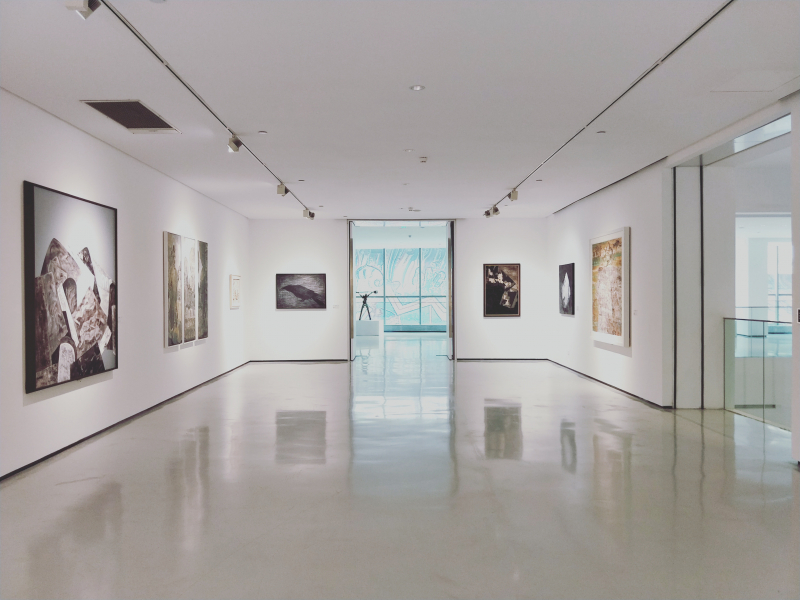
Image by Dannie Jing via pexels.com (photo is used for illustration only) Video by HORNEX via youtube.com














